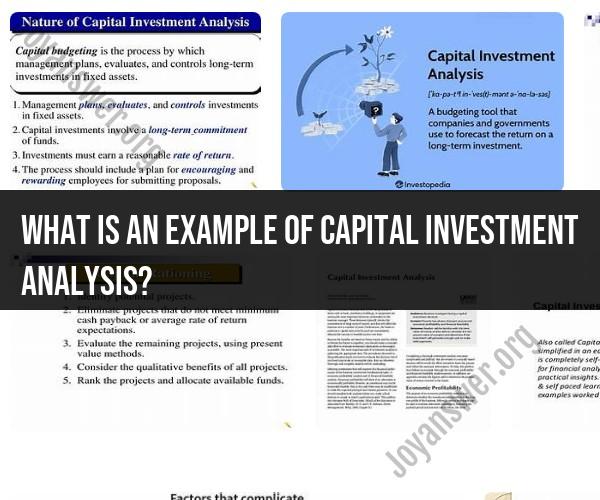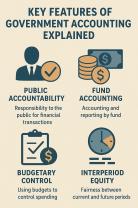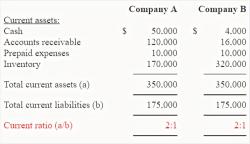What is an example of capital investment analysis?
A capital investment analysis is a process businesses use to evaluate the potential returns and risks associated with investing in long-term assets, such as machinery, equipment, buildings, or projects. Here's a simplified real-life example of a capital investment analysis:
Scenario:Let's consider a manufacturing company that is contemplating whether to purchase a new piece of machinery for its production line. The new machinery costs $100,000, and the company expects it to generate cost savings and additional revenue over the next five years.
Key Data:
- Initial Investment (Cost of Machinery): $100,000
- Annual Cost Savings: The new machine is expected to save $20,000 per year in operating costs compared to the old machine.
- Additional Annual Revenue: The company anticipates an additional $15,000 per year in revenue because the new machine can produce higher-quality products more efficiently.
- Salvage Value: At the end of five years, the company expects to sell the machine for $20,000.
- Required Rate of Return (Discount Rate): 10% (This represents the company's minimum acceptable rate of return, often referred to as the hurdle rate.)
Analysis:
Calculate Net Cash Flows: For each year, calculate the net cash flow, which is the difference between the cost savings, additional revenue, and the depreciation of the machinery. Depreciation is a non-cash expense but should be factored in.
Year 1:
- Cost Savings: $20,000
- Additional Revenue: $15,000
- Depreciation: ($100,000 / 5 years) = $20,000
- Net Cash Flow: $20,000 + $15,000 - $20,000 = $15,000
Repeat this calculation for each of the five years.
Calculate the Net Present Value (NPV): NPV is the sum of the present values of all net cash flows. Each year's net cash flow is discounted to its present value using the required rate of return (10% in this case).
Calculate the Payback Period: Determine how long it takes for the initial investment to be recovered based on the annual net cash flows.
Calculate the Internal Rate of Return (IRR): The IRR is the discount rate that makes the NPV equal to zero, indicating the rate of return the investment is expected to generate.
Results:
NPV: If the NPV is positive, it suggests the investment is expected to generate more returns than the required rate of return. If negative, it may not be a good investment.
Payback Period: The payback period tells you how many years it takes to recover the initial investment. In this example, let's say it takes 3.5 years.
IRR: The IRR represents the internal rate of return on the investment. In this example, let's say it's 15%.
Based on the analysis, the company might decide to proceed with the investment in the new machinery if the NPV is positive, the payback period is reasonable, and the IRR exceeds the required rate of return.
This is a simplified example, and real-life capital investment analyses can be more complex, considering factors like taxes, inflation, and risk assessments. Businesses use such analyses to make informed decisions about allocating their financial resources to projects and assets with the highest potential for profitability.
Can you provide an example of a capital investment analysis?
Sure. Here is an example of a capital investment analysis for a new manufacturing plant:
Project: New manufacturing plant
Initial investment: $10 million
Expected annual revenue: $5 million
Expected annual expenses: $2 million
Expected annual profit: $3 million
Net present value (NPV): $5 million
Return on investment (ROI): 50%
Payback period: 3 years
Based on this analysis, the new manufacturing plant is a feasible investment. The NPV is positive, the ROI is high, and the payback period is short.
What factors are considered when evaluating the feasibility of a capital investment?
The following factors are typically considered when evaluating the feasibility of a capital investment:
- Initial investment: The initial investment is the amount of money that needs to be invested upfront in order to implement the project.
- Expected annual revenue: The expected annual revenue is the amount of money that the project is expected to generate each year.
- Expected annual expenses: The expected annual expenses are the costs associated with operating the project each year.
- Expected annual profit: The expected annual profit is the difference between the expected annual revenue and the expected annual expenses.
- Net present value (NPV): The NPV is a measure of the current value of a future stream of cash flows. It is calculated by taking the sum of the discounted future cash flows, where the discount rate is typically the company's cost of capital.
- Return on investment (ROI): The ROI is a measure of the profitability of an investment. It is calculated by dividing the expected annual profit by the initial investment.
- Payback period: The payback period is the amount of time it takes to recover the initial investment. It is calculated by dividing the initial investment by the expected annual profit.
In addition to these quantitative factors, other factors such as strategic fit, market risk, and operational risk should also be considered when evaluating the feasibility of a capital investment.
How is the return on investment (ROI) calculated in capital investment analysis?
The ROI for a capital investment project is calculated by dividing the expected annual profit by the initial investment.
For example, if a project is expected to generate $3 million in annual profit and the initial investment is $10 million, the ROI would be 30%.
Are there risk assessment techniques in capital investment decision-making?
Yes, there are a number of risk assessment techniques that can be used in capital investment decision-making. Some common techniques include:
- Scenario analysis: Scenario analysis involves developing a number of different scenarios for the project, each with different assumptions about the key factors that will impact the project's success. The NPV and ROI of the project are then calculated for each scenario.
- Sensitivity analysis: Sensitivity analysis involves changing the value of one key factor at a time and seeing how this impacts the NPV and ROI of the project.
- Decision trees: Decision trees are a visual representation of the different paths that a project can take and the associated probabilities and outcomes. Decision trees can be used to identify and assess the risks associated with a project.
- Monte Carlo simulation: Monte Carlo simulation is a computer-based technique that can be used to simulate the impact of different factors on the NPV and ROI of a project.
What are the common methods for comparing different capital investment projects?
There are a number of different methods that can be used to compare different capital investment projects. Some common methods include:
- Net present value (NPV): The NPV method is one of the most common methods for comparing capital investment projects. It involves calculating the NPV of each project and selecting the project with the highest NPV.
- Internal rate of return (IRR): The IRR method is another common method for comparing capital investment projects. It involves calculating the IRR of each project and selecting the project with the highest IRR.
- Payback period: The payback period method is a simpler method for comparing capital investment projects. It involves calculating the payback period of each project and selecting the project with the shortest payback period.
The best method for comparing capital investment projects will depend on the specific needs of the company and the projects being compared.













